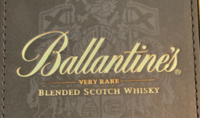What is Blended Whisky

Blended Whisky
Whisky, a drink with a rich history and a complex flavor profile, is often seen as the epitome of craftsmanship and tradition. Within this world of distilled perfection, there are various categories, each with its own unique characteristics. One of the most intriguing and often underrated categories is blended whisky. In this blog, we will delve deeper into the world of blended whisky, discover how it is made, and why it deserves a place in every whisky enthusiast's collection.
What is Blended Whisky?
Blended whisky is a mix of different types of whiskies, often sourced from multiple distilleries. This can include both malt whisky and grain whisky. The goal of blending is to create a consistent and balanced flavor profile that is difficult to achieve with a single whisky (single malt or single grain). Blended whisky offers the opportunity to combine the strengths of various whiskies, resulting in a final product that is greater than the sum of its parts.
History of Blended Whisky
The practice of blending whisky began in the 19th century. At that time, whisky production was not standardized, and quality could vary greatly. To provide a consistent product that appealed to a broader audience, distillers began mixing different whiskies. One of the pioneers in this field was Andrew Usher, who created the first commercial blended whisky in the 1860s.
Blended whisky played a crucial role in popularizing whisky worldwide. It offered a milder and more accessible flavor profile than many single malts, making it more appealing to a larger audience. As a result, it became the dominant form of whisky production in Scotland and beyond.
The Blending Process
Creating a blended whisky is an art in itself. It begins with the selection of the components: malt whisky and grain whisky. Malt whisky is made from malted barley and is distilled in pot stills, while grain whisky is made from various grains and distilled in continuous stills, resulting in a lighter and smoother whisky.
The master blender plays a critical role in this process. This expert is tasked with selecting and combining different whiskies to create a harmonious and consistent final product. Blending can involve anything from a few dozen to hundreds of different whiskies. Each batch must be carefully tasted and adjusted to ensure that the final product meets the desired specifications.
Advantages of Blended Whisky
-
Consistency: One of the greatest advantages of blended whisky is consistency. While single malts can vary from batch to batch, blended whisky offers a consistent flavor profile that can be reproduced time and again.
-
Price: Blended whisky is often more affordable than single malts, making it an accessible option for novice whisky drinkers.
-
Flavor Profile: By combining different whiskies, blenders can create a complex and balanced flavor profile that is difficult to achieve with a single whisky.
-
Versatility: Blended whiskies are often more versatile and can be enjoyed neat, on the rocks, or in cocktails.
Famous Brands and Examples
There are many well-known brands that specialize in blended whiskies. Some of the most prominent are:
- Johnnie Walker: Perhaps the most iconic brand of blended whisky, known for its distinctive labels such as Red Label, Black Label, and Blue Label.
- Chivas Regal: Known for its rich and smooth flavor profile, Chivas Regal is a popular choice among whisky enthusiasts.
- Ballantine's: Another major name in the world of blended whisky, Ballantine's offers a wide range of options, from their entry-level blend to premium blends.
Misconceptions and Prejudices
There are many misconceptions about blended whisky. A common prejudice is that blended whisky is of lower quality than single malts. However, this is a simplistic view of the complex world of whisky. While there are certainly low-quality blended whiskies, the same can be said for some single malts. The quality of a whisky depends on the craftsmanship of the producer, not the category.
Another misconception is that blended whiskies are less complex. This is often not the case. Many blended whiskies offer incredibly complex and rich flavor profiles thanks to the combination of different whiskies.
How to Enjoy Blended Whisky
There are many ways to enjoy blended whisky. For purists, drinking whisky neat, or with a few drops of water to open up the flavors, is the best way to appreciate the nuances of the drink. However, blended whiskies are also well-suited for making cocktails. Classic cocktails such as the Whisky Sour, Old Fashioned, and Rob Roy all come to life with a good blended whisky.
Conclusion
Blended whisky is an integral part of whisky culture, with a rich history and a wide range of flavor profiles that appeal to both beginners and seasoned whisky lovers. The blending process is an art that requires patience, expertise, and a keen sense of taste. While single malts often receive the most attention, blended whisky certainly deserves a place in the spotlight for its versatility, accessibility, and complexity. Whether you are new to the world of whisky or a seasoned connoisseur, blended whisky offers something special for everyone to discover and appreciate.
No comments found.












